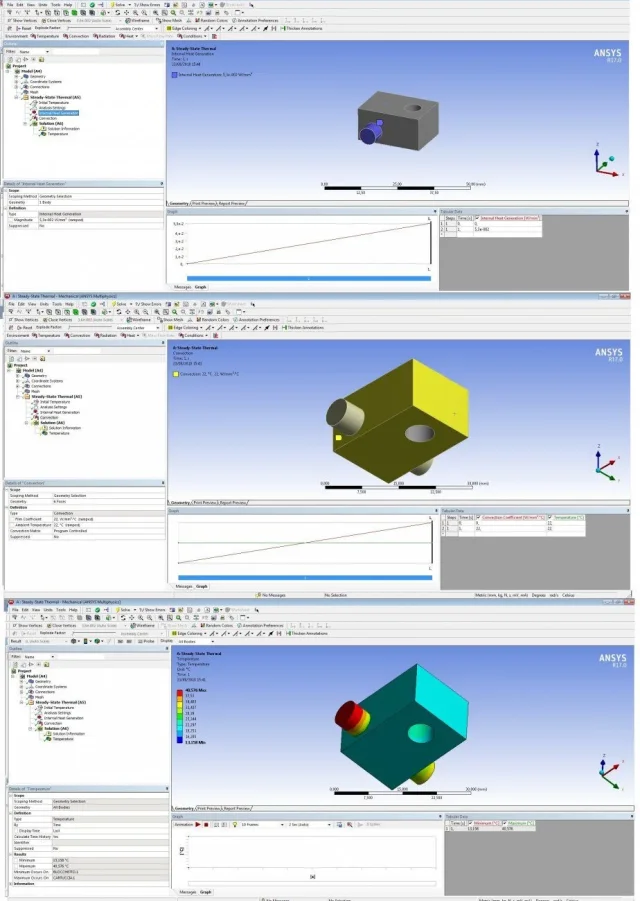I have a resistance of 40 w, I decided to treat it as an internal generation, ansys has as a unit of measurement for the internal generation w/mm3, then I decided to take the power of 40 w and diveder it for the volume of the resistance that generates 770mm3 that from as a result 0.05 w/mm3 and insert this data as load
If in your simulator, the volume of the solid you call "load" is 770 mm3, then it may also be right.
after you arrived you and told me that it does not need to divide the strength of the resistance for its volume only that this type of simulator has as a unit of measure w/mm3 and I inserted 40 as load... but so I arrive at 6000 degrees
what I told you is that you do not need the specific power (power/volume), but only the total power that I seem to be always 40 w...
Now my question is, since your account is right, even if I wonder how you did it.
is not a difficult calculation: just match the power that enters (40 w) with the one coming out (always 40 w) and you have the heat balance. Since the power that comes out does so in two ways, irrational and convection, just take the two equations that manage these energy flows (each reported to its reference surface) and find the temperature to which you have the balance. for irradiation use the equation of stefan-boltzmann, for convection it is sufficient that of thermal transmittance.
What number do I need to insert as a load? Is my reasoning right?
I think you're leaving from wrong assumptions: You're a student and I think this is an exercise you've been asked to solve. exercises are used to connect theory to the reality of the phenomenal world around us, not to put the magic number in the simulator that makes you get the right result.
I have already told you (and in the last post you confirm it explicitly) that you cannot use that simulator. Now you have two roads: I have studies of manuals to learn how to use it (long road...) or do some tests to understand empirically that numbers slip into it.
What would I do if I didn't have the manuals but I just knew how to set the operation? I would take a radius ball 1 m, I would put a source of 1 w and I would calculate analytically the result, comparing it with that of the simulator... It also seems to me an interesting thing for a student, as long as you get into what you're studying.

